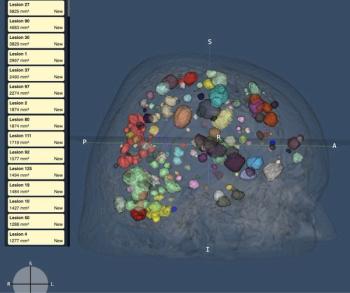
Can MRI-Based Prostate Cancer Screening be a Viable Alternative to PSA Testing?
In what may be the first study to assess the effectiveness of biparametric magnetic resonance imaging (MRI) for prostate cancer screening in a large cohort, researchers found that MRI screening had a significantly lower false positive rate and significantly higher positive predictive values (PPVs) than prostate-specific antigen (PSA)-based screening.
Compared with prostate-specific antigen (PSA)-based screening for prostate cancer, the use of biparametric prostate magnetic resonance imaging (MRI) could potentially reduce unnecessary biopsies without increasing the risk of underdiagnosis, according to a study presented at the
“MRI-based screening showed lower proportions of screening-positive cases, lower false positive rates, and higher PPVs [positive predictive values] than those of PSA-based screening,” noted Taek Min Kim, M.D., an assistant professor in the Department of Radiology at Seoul National University Hospital in Seoul, Korea, and colleagues.
While the PSA test is utilized for
In their retrospective review, the study authors reviewed data from 1,793 men (mean age 59.7) who had biparametric prostate MRI and PSA testing for prostate cancer screening from January 2018 to June 2021. A urology consultation at a tertiary medical center was requested if the PSA level was 3 ng/mL or greater, or if prostate cancer was suspected based on MRI. The urologist in each center determined whether the patient needed follow-up or biopsy.
The researchers compared the proportion of men with a positive MRI, based on a Prostate Imaging Reporting & Data System [PI-RADS] score of 3-5 or 4-5, with those with a PSA level of 3 ng/mL or greater. The cancer detection rates, false positive rates, and PPVs were compared between the two screening tests. The PPVs were calculated from all screening-positive cases (PPV1) or biopsied cases (PPV2).
Overall, 150 men (8.4 percent) had a positive PSA test, a finding that was significantly greater than the proportion of men with a positive MRI result with 62 men (3.5 percent) with PI-RADS 3-5 and 41 men (2.3 percent) with PI-RADS 4-5.
The cancer detection rates were similar at 1.1 percent for PSA, PI-RADS 3-5, and PI-RADS 4-5. The false positive rate was significantly higher with the PSA test (7.4 percent) in comparison with that of MRI PI-RADS 3-5 scores (2.4 percent) and MRI PI-RADS 4-5 scores (1.2 percent). The PPVs were significantly lower with the PSA test (PPV1, 12.7 percent; PPV2, 36.5 percent) than that for PI-RADS 3-5 (PPV1 32.3 percent, PPV2 58.8 percent) or PI-RADS 4-5 (PPV1, 46.3 percent; PPV2, 87.5 percent).
For patients who underwent a biopsy, the sensitivity for detecting castration-sensitive prostate cancer was 95.2 percent for PI-RADS 3-5 and 90.4 percent for PI-RADS 4-5, according to the study. However, the researchers noted that a low proportion of the patients underwent a biopsy after positive screening results, at 54.8 percent to 58.5 percent with MRI and 35.3 percent with PSA, a factor that may contribute to overestimation of false positive rates for both tests.
A simplified cost-effectiveness analysis found that “despite the high cost, MRI was expected to reduce unnecessary costs for prostate cancer diagnosis,” according to the study authors.
Newsletter
Stay at the forefront of radiology with the Diagnostic Imaging newsletter, delivering the latest news, clinical insights, and imaging advancements for today’s radiologists.




